Fetal pleural effusion was treated with intervention.
Recently, doctors at the Fetal Intervention Center of Hanoi Obstetrics and Gynecology Hospital placed a shunt to drain pleural fluid for a 25-week-old fetus with bilateral pleural effusion. The pregnant woman is Ms. NTT (30 years old, from Thanh Hoa).
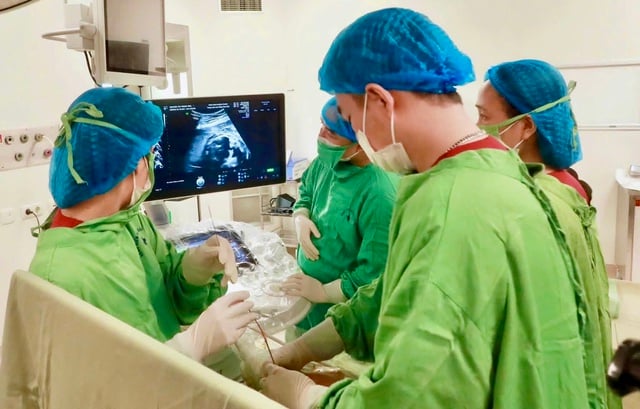
25-week-old fetus with bilateral pleural effusion was successfully treated at Hanoi Obstetrics Hospital
PHOTO: NGUYEN THANH
At the Fetal Intervention Center, ultrasound results showed: the fetus had bilateral pleural effusion, the right side was 70 mm thick, the left side was 38 mm thick; the fetus had collapsed almost all of the right lung parenchyma and part of the left lung parenchyma; excess amniotic fluid and the heart was displaced due to fluid compression.
Doctors determined that this was a case of severe pleural effusion, causing collapsed lung and risk of pulmonary hypoplasia, requiring early intervention to reduce pressure in the fetal chest.
After consultation, the team of the Fetal Intervention Center performed fetal intervention to place a shunt to drain pleural fluid. Under ultrasound guidance, the guide needle was gently inserted through the mother's abdominal wall, approaching the fetal pleural cavity. The very small shunt was placed in the appropriate position, draining fluid from the fetal pleural cavity out of the amniotic sac, reducing pressure and creating conditions for the fetal lungs to expand again.
At the same time, the excess amniotic fluid was also removed to ensure it was appropriate for the gestational week. Three days after the intervention, the ultrasound results showed that the pleural fluid had gradually drained out, the left lung no longer had fluid and the right lung had begun to expand well, the fetal heart was no longer displaced as before, the abdominal fluid had completely disappeared and there was no longer excess amniotic fluid.
According to Dr. Dinh Thuy Linh, Deputy Director of Hanoi Obstetrics Hospital, fetal intervention is performed for a number of fetal diseases, including cases of twin-to-twin transfusion and fetal pleural effusion.
With fetal pleural effusion, the doctor will place a drainage shunt while the baby is still in the womb. This shunt drains the fluid out to ensure the baby continues to develop, and after birth the baby does not suffer from respiratory failure due to pulmonary hypoplasia.
The 2025 scientific conference on obstetrics and gynecology was held by Hanoi Obstetrics and Gynecology Hospital last week in Hanoi, with specialized reports (anesthesia, resuscitation, diagnostic imaging, obstetric and gynecological cancer, assisted reproduction, neonatology...) to update expertise and improve the quality of diagnosis and treatment.
According to information shared at the conference, in the first 10 months of 2025, Hanoi Obstetrics and Gynecology Hospital performed 372 fetal interventions for prenatal diagnosis, twin-to-twin blood transfusion surgery, chorionic villus biopsy, umbilical cord blood collection, pleural fluid aspiration, umbilical cord blood transfusion...
Fetal intervention to treat the fetus is to insert endoscopic surgical instruments through the mother's abdominal wall, into the amniotic sac to treat the fetus, helping the fetus develop normally, and the baby is born healthy.
Source: https://thanhnien.vn/can-thiep-bao-thai-chua-benh-cho-thai-nhi-bi-tran-dich-mang-phoi-185251123170945669.htm



![[Photo] Close-up of heavy damage at the school located on the banks of the Ban Thach River](/_next/image?url=https%3A%2F%2Fvphoto.vietnam.vn%2Fthumb%2F1200x675%2Fvietnam%2Fresource%2FIMAGE%2F2025%2F11%2F26%2F1764152130492_ndo_bl_img-8188-8805-jpg.webp&w=3840&q=75)



![[Photo] VinUni students' emotions are sublimated with "Homeland in the Heart: The Concert Film"](/_next/image?url=https%3A%2F%2Fvphoto.vietnam.vn%2Fthumb%2F1200x675%2Fvietnam%2Fresource%2FIMAGE%2F2025%2F11%2F26%2F1764174931822_10-3878-jpg.webp&w=3840&q=75)
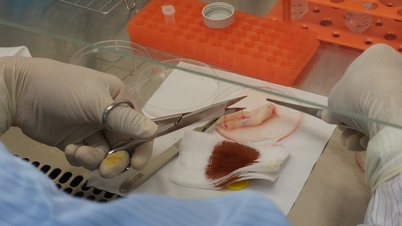


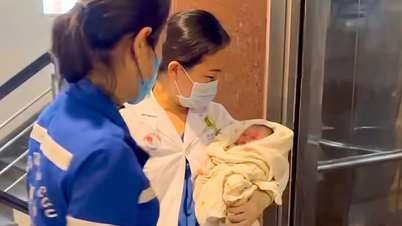

















































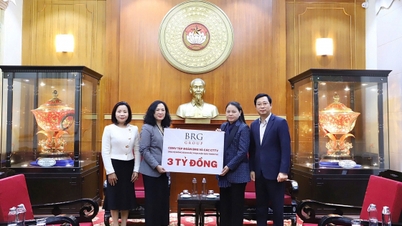


























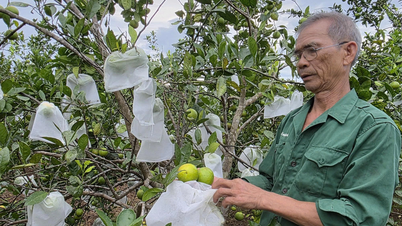




















Comment (0)